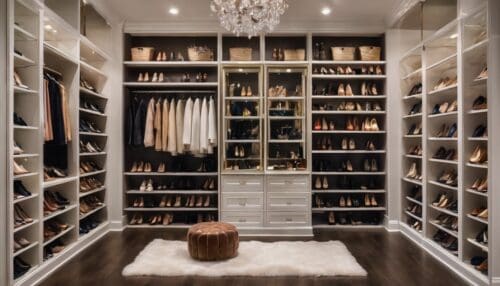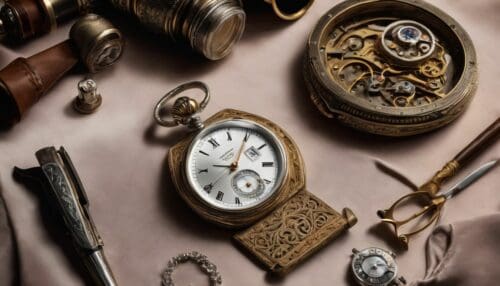Updated On: April 07, 2024 by Ciaran Connolly
The debate between paper pens and digital planners has become increasingly relevant as technology shapes our lives. While both options have their merits, choosing the right planner depends on individual preferences, organizational needs, and personal habits. Paper pen planners offer a tangible and customizable experience, fostering creativity and providing a break from screen time. On the other hand, digital planners offer convenience, efficiency, and integration with digital tools. This article explores the advantages and considerations of paper pens and digital planners, highlighting the factors to consider when deciding and showing us 10 of the best luxury planners; it will also explore why many people need them and if they are worth getting.
What Is the Best Planner System?
The best planner ultimately depends on personal preferences and needs. Several popular planner systems are available, each with unique features and benefits. Here are a few popular options:
- Bullet Journal: The Bullet Journal method is a customizable system that allows you to create your planner using a notebook or journal. It involves using symbols and short sentences to organize tasks, events, and notes.
- Erin Condren LifePlanner: The Erin Condren LifePlanner is a highly customizable planner that offers various layouts, covers, and accessories. It includes weekly and monthly spreads, goal-setting pages, and additional features like stickers and pockets.
- Passion Planner: The Passion Planner is designed to help you define and track your goals. It combines monthly and weekly spreads, space for reflection and gratitude, and a focus on prioritization and time-blocking.
- Panda Planner: The Panda Planner is a goal-oriented planner focusing on productivity and overall well-being. It includes monthly, weekly, and daily sections and spaces for reflection, gratitude, and positive affirmations.
- Hobonichi Techo: The Hobonichi Techo is a Japanese planner known for its high-quality paper and minimalist design. It offers a daily layout with ample space for scheduling, journaling, and creativity.
So, consider your specific needs, such as whether you prefer a structured or flexible layout, the size and portability of the planner, and any additional features or customization options you require. Ultimately, the best planning system is the one that helps you stay organized, motivated, and productive. It may take some experimentation to find the perfect fit for you.
Is Paper Pen Planner Better Than Digital Ones?
Whether a paper pen or digital planner is better depends on personal preference and individual needs. Here are some points to consider when deciding between the two:
Advantages of Paper Pen Planners:
- Tangible Experience: Many people enjoy the tactile experience of writing on paper and flipping through physical pages. It can provide a sense of connection and engagement with your planning process.
- Creativity and Customization: Paper planners often offer more flexibility for customization. You can personalize layouts, add drawings or stickers, and use various colours and pens to make your planner unique and visually appealing.
- Reduced Screen Time: If you spend significant time on digital devices, a paper pen planner can provide a break from screens and reduce eye strain.
- Improved Memory and Focus: Writing things down manually has been found to enhance memory retention and focus. The act of physically writing can help you better process and remember information.
Advantages of Digital Planners:
- Accessibility and Syncing: Digital planners can be accessed from multiple devices, such as smartphones, tablets, or computers, allowing seamless syncing and access to your planner from anywhere.
- Efficiency and Organization: Digital planners often have features like reminders, notifications, and search functions that can help you stay organized, set deadlines, and quickly find information.
- Easy Editing and Flexibility: Digital planners allow easy editing and rearranging of tasks, events, or notes without erasing or rewriting. This flexibility can be beneficial if your plans frequently change.
- Integration with Digital Tools: Digital planners can incorporate other productivity tools and apps, such as calendars, task managers, or note-taking applications, allowing for streamlined workflows and easy integration with your digital ecosystem.
Consider your preferences, planning style, and the most important benefits. Some individuals may find a combination of paper and digital planners helpful, using each for different purposes or aspects of their planning. Ultimately, the best choice is the one that supports your planning habits, keeps you organized, and helps you achieve your goals effectively.
Why Do People Use Luxury Planners?
People use luxury planners and planners in general for various reasons, as these tools offer numerous benefits and serve different purposes. Here are some common reasons why people use luxury planners and planners in general:
- Organization and Productivity: Planners help individuals stay organized and manage their time effectively. They provide a structured framework for scheduling appointments, tracking tasks, and setting goals, which can enhance productivity and efficiency.
- Goal Setting and Achievement: Planners allow individuals to set short-term and long-term goals, break them down into manageable tasks, and track progress. This process helps with goal clarity, motivation, and a sense of accomplishment when achieving objectives.
- Time Management: Planners enable individuals to allocate their time efficiently, prioritize tasks, and avoid over-commitment. They visually represent one’s schedule, making planning and giving time for important activities easier.
- Memory and Information Management: Planners serve as a repository for important information, allowing individuals to jot down notes, record ideas, and store essential details. Planners help improve memory recall and prevent information loss by having everything in one place.
- Accountability and Commitment: Planners provide a means of holding oneself accountable for commitments, deadlines, and personal growth. Individuals are more likely to follow through and take action by documenting tasks and goals.
- Reflection and Self-Care: Planners often include reflection, gratitude, and self-care sections. They encourage individuals to step back, reflect on their progress, express gratitude, and prioritize self-care, promoting mental well-being and balance.
- Personal Expression and Creativity: Planners offer personal expression and creativity opportunities. Whether through doodling, designing layouts, or incorporating stickers and decorations, individuals can customize their planners to reflect their personality and make the planning process enjoyable.
- Stress Reduction: A well-organized planner can reduce stress by providing a clear overview of tasks and commitments. It allows individuals to proactively plan, manage expectations, and minimize the risk of feeling overwhelmed.
Regarding luxury planners specifically, some people choose them for their premium quality materials, exquisite designs, and brand prestige. Luxury planners can offer a heightened sense of satisfaction and enjoyment, elevating the planning experience to a luxurious and indulgent level. Whether luxury or not, planners help individuals lead more organized, productive, and fulfilling lives. They provide a practical tool for managing time, goals, and information while offering a platform for self-expression and personal growth.
What Is the Most Popular Planner Layout?
The popularity of planner layouts can vary depending on personal preferences, trends, and the needs of individuals. However, a few planner layouts have gained significant popularity over the years. Here are three commonly used planner layouts:
- Weekly Vertical Layout: This layout is characterized by vertical columns for each day of the week, typically spanning two pages. Each day is divided into several sections or time slots, allowing you to schedule and organize your tasks, appointments, and events for each day. This layout offers a clear and structured overview of your week.
- Daily Page Layout: The daily page layout dedicates a single page to each day, providing ample space to jot down tasks, appointments, and notes for that specific day. Daily layouts include additional goals, priorities, meal planning, and gratitude sections. This layout is ideal for those who prefer a more detailed and focused approach to planning.
- Monthly and Weekly Combination Layout: Many planners combine monthly and weekly layouts to offer a comprehensive planning experience. The monthly spreads provide an overview of the entire month, while the weekly spreads offer more detailed planning for individual weeks. This layout lets you see the big picture and the specific details of your schedule.
Remember, the popularity of planner layouts can change over time as new designs and styles emerge. Choosing a layout that aligns with your planning style, preferences, and organizational needs is essential. Experimenting with different layouts can help you determine which one suits you best.
What Are the Most Expensive 10 Planners?
The high-end and luxury planners are historically known for their premium prices. Those prices may vary over time and based on location. Here are ten planners that have been associated with higher price ranges:
- Louis Vuitton Agenda: Louis Vuitton offers luxurious agendas and planners with high-quality materials featuring their iconic monogram patterns. These planners are often considered luxury fashion accessories and can be quite expensive.
- Hermès Planner: Hermès, a renowned luxury brand, produces exquisite leather planners known for their craftsmanship and elegance. These planners can be quite expensive due to the brand’s reputation and use of high-quality materials.
- Filofax Malden Personal Organiser: Filofax is known for its range of premium organizers and planners. The Filofax Malden Personal Organiser, made with top-grain leather, is popular among planner enthusiasts and can be more costly than other options.
- Smythson Panama Diary: Smythson is a British brand famous for its luxury stationery, including diaries and planners. The Smythson Panama Diary is a high-quality planner with signature cross-grain leather and meticulous attention to detail.
- Montblanc Fine Stationery: Montblanc offers a range of fine stationery products, including planners and agendas. Known for their exceptional quality and craftsmanship, Montblanc planners often come at a premium price point.
- Kate Spade New York Planner: While less high-end than some other luxury brands, Kate Spade New York offers a range of stylish and well-designed planners that can be pricier than more affordable.
- Mulberry Planners: Mulberry, a British luxury brand, produces planners and agendas from high-quality leather. Their planners often feature a clean and sophisticated design with higher prices.
- Chanel Agenda: Chanel, a renowned fashion brand, has offered limited edition and special collaboration agendas and planners. These can be expensive due to their exclusivity and association with the Chanel brand.
- Shinola Planner: Shinola, an American luxury goods manufacturer, creates high-quality leather goods, including planners. Their planners are known for their craftsmanship and attention to detail, which can contribute to a higher price point.
- Moleskine Limited Edition Planners: Moleskine, a popular brand known for its notebooks and planners, occasionally releases limited edition planners with unique designs, collaborations, or special features. These limited-edition versions can be pricier than their regular lineup.
The prices for luxury items can vary significantly based on factors such as materials used, brand reputation, exclusivity, and design elements. Checking prices and availability from official brand websites or authorized retailers is always reasonable.
Are Expensive Planners Worth It?
The worthiness of an expensive planner depends on individual preferences, needs, and budget. Here are a few factors to consider when deciding if an expensive planner is worth it for you:
- Quality and Durability: Expensive planners often use high-quality materials and superior craftsmanship, contributing to their durability and longevity. Investing in a well-made, expensive planner might be worthwhile if you value a planner that will withstand daily use and last for a long time.
- Functionality and Features: Consider the features and functionalities offered by the planner. Expensive planners may include additional sections for goal setting, habit tracking, note-taking, or specific layouts tailored to your needs. If these features align with your planning style and help you stay organized, they could provide value for the price.
- Aesthetics and Personal Satisfaction: Some people find joy and motivation in using a visually appealing planner that reflects their personal style. If an expensive planner’s design, brand, or overall aesthetic satisfies you and enhances your planning experience, it may be worth the investment.
- Brand and Prestige: Luxury brands often carry a certain reputation and prestige associated with their products. Suppose owning a planner from a renowned luxury brand holds significance for you, and you appreciate its exclusivity and status. In that case, the higher price may be justified based on personal values and preferences.
- Financial Considerations: It’s essential to consider your budget and financial situation before investing in an expensive planner. Determine if the planner’s cost aligns with your overall financial priorities and if it is a justifiable expense within your means.
Ultimately, the value of an expensive planner is subjective and varies from person to person. What may be worth it for one individual might not be for another. It’s essential to evaluate your needs, preferences, and financial circumstances to determine if an expensive planner’s features, quality, and brand appeal align with what you seek in a planning tool.
What Is the Best Planner for Writers 2023?
There are many features writers may find helpful in a planner. When looking for a planner as a writer, consider the following:
- Ample Writing Space: Look for a planner with sufficient space for daily or weekly writing tasks, goals, and deadlines. Blank or lined pages can be useful for jotting ideas, outlining plots, or drafting scenes.
- Goal Setting and Progress Tracking: Writers often have specific writing goals and deadlines. A planner with goal-setting sections and progress trackers can help you stay accountable and motivated in reaching your writing milestones.
- Project Planning: If you’re working on multiple writing projects simultaneously, a planner that allows you to organize and track progress on each project separately can be beneficial. Look for features like project-specific pages or sections.
- Inspiration and Prompts: Some planners include inspirational quotes, writing prompts, or creative exercises that can spark your imagination and help overcome writer’s block. Consider if these features would be helpful for your writing process.
- Flexibility and Customization: Writers have diverse planning styles, so finding a planner that allows customization and adaptability to suit your needs can be advantageous. Look for planners allowing you to add or remove pages, move sections around, or incorporate your writing-related inserts.
- Portability: If you prefer to carry your planner with you while writing on the go, consider a few things, such as the size, weight, and portability of the planner. A compact or lightweight option might be more suitable for writers who are frequently on the move.
Explore various planner options, read reviews, and consider the features that align with your writing needs and preferences. Also, researching and checking for newly released planners that cater specifically to writers or offer features that can benefit writers.
So, the best choice depends on individual needs, planning style, and the desire for a physical or digital planning experience. Some individuals find combining both types beneficial, using each for different aspects of their lives. By considering personal preferences and organizational requirements, one can select the planner that aligns best with their lifestyle, helping them stay organized, motivated, and productive.











